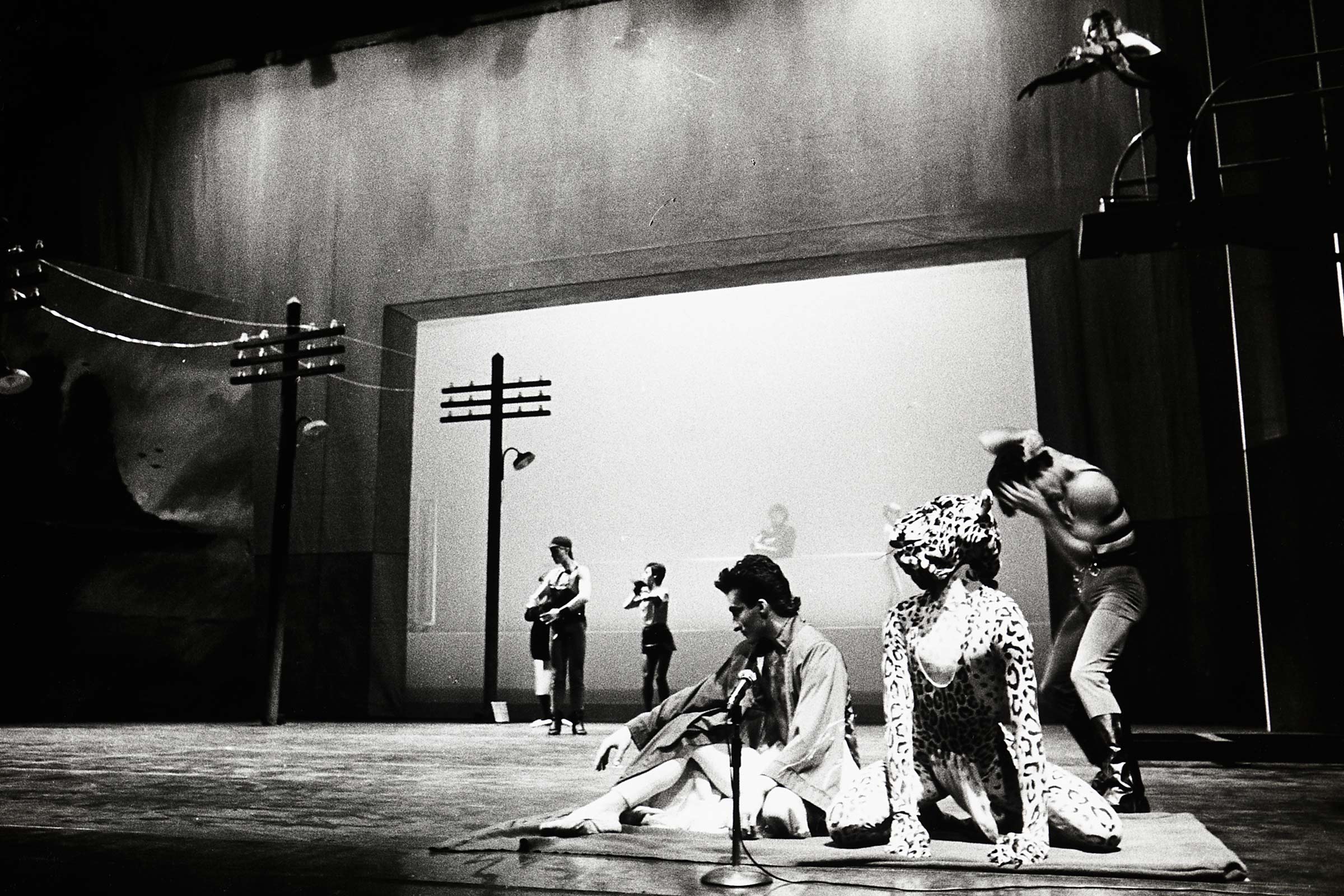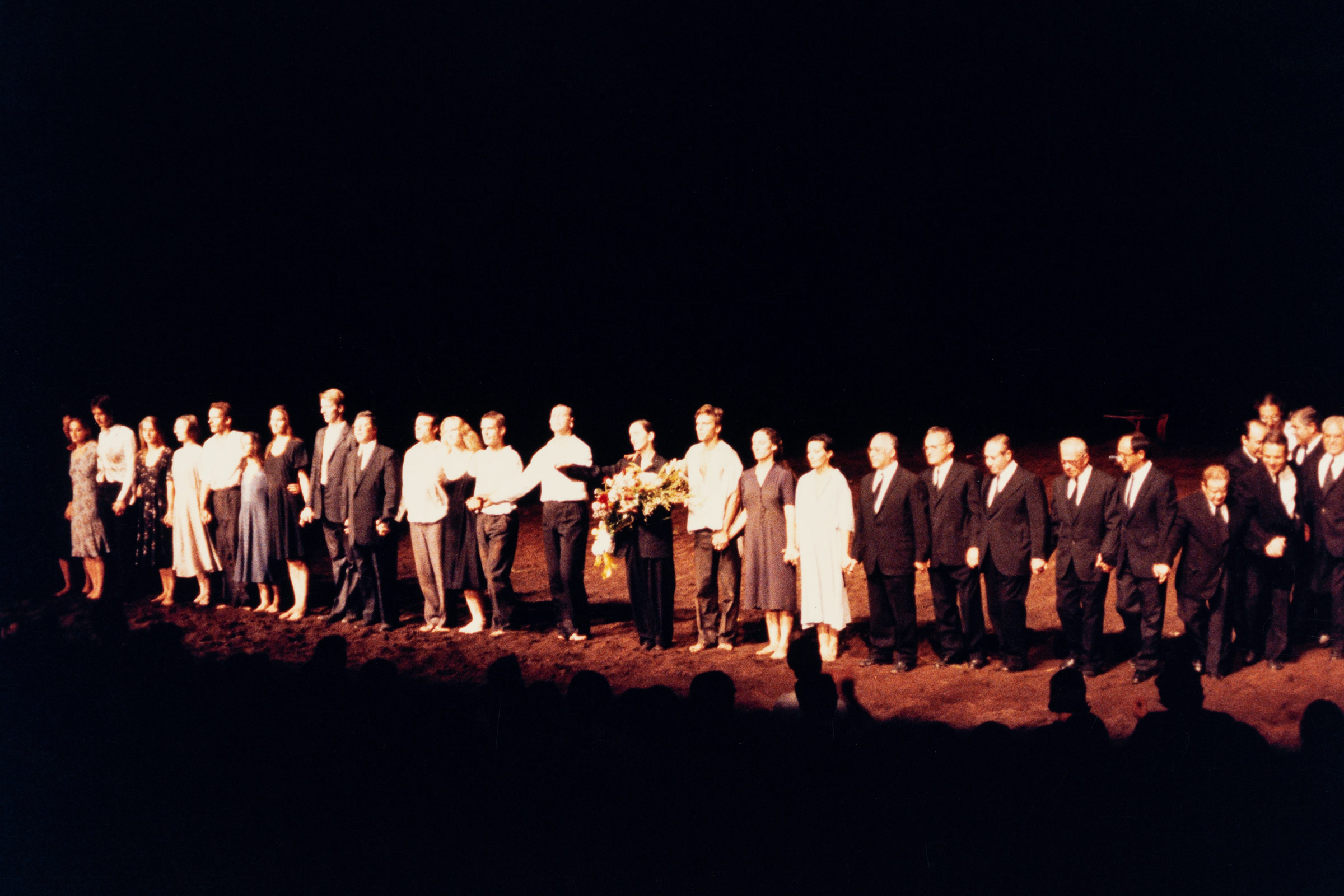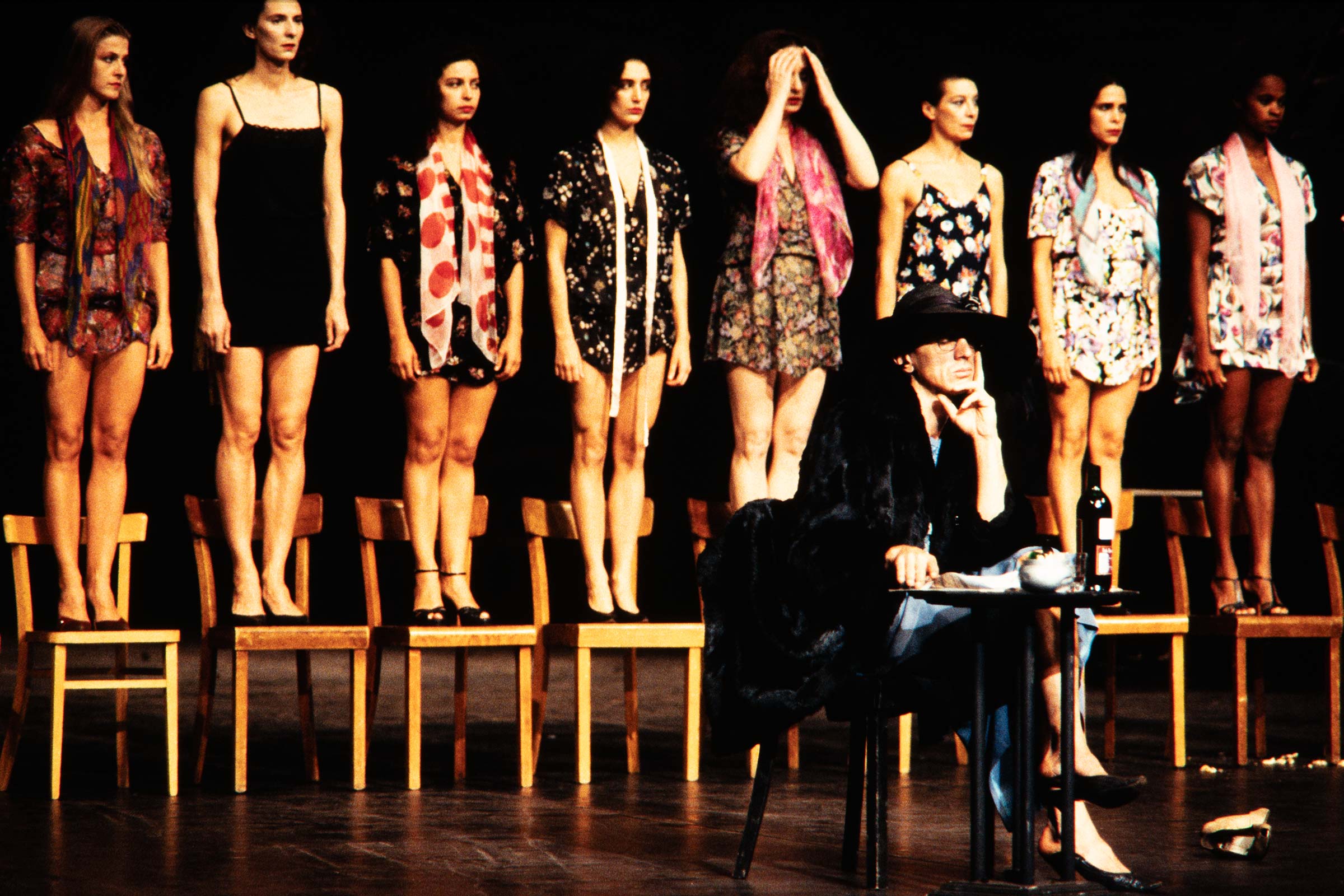Waiting for Pina Bausch
It was Madalena de Azeredo Perdigão who first brought Pina Bausch to Lisbon, for the 3rd edition of the Encontros ACARTE, in 1989.
In April 1984, the former director of the Gulbenkian’s Music Department submitted a proposal to the foundation’s board for ACARTE, a new unit focused on outreach, the creative arts and education through art. The proposal was approved the same month. The plan was to be open to innovation and experimentation, doing away with preconceived ideas about artistic genres or forms of expression. In the field of dance, priority was to be given to presenting small companies or avant-garde groups from abroad.
Dance-Theatre had originated as a form of artistic expression in the 1920s, in Germany, with the choreographer Rudolph Laban, and was subsequently developed by his student Kurt Jooss, a teacher and choreographer, and Pina Bausch’s mentor. She had been the prime mover in consolidating this new form of dance, as from the early 1970s, later influencing the programming of the Ballet Gulbenkian, such as the piece Só longe daqui (1984), choreographed and staged by Vasco Wellenkamp and Ricardo Pais. ACARTE first presented Dance-Theatre in 1986, with Suzanne Linke, a choreographer and performer, in the piece called Solos, featured as part of Dance in the Centro de Arte Moderna.

The Encontros ACARTE New European Theatre/Dance first took place in 1987, aiming to introduce Portuguese audiences and artists to the wider European scene in these areas, with a special emphasis on Dance-Theatre.
Pina Bausch was one of the most important figures in this new movement, and her work was featured for the first time at the Encontros ACARTE the following year, in a video series devoted to several choreographers.


Madalena de Azeredo Perdigão – who sadly died on 5 December 1989 – devoted considerable energy to bringing Pina Bausch and her company to Portugal. She enlisted the help of the dance historian, José Sasportes, then press attaché at the Portuguese embassy in Rome, whom she asked to travel to Paris and plead her case with the choreographer, who was to attend a lunch hosted by the Gulbenkian Cultural Centre in Paris from the Calouste Gulbenkian’s Foundation.
The mission was a success. Pina Bausch’s Tanztheater Wupperthal was presented in the Grand Auditorium of the Calouste Gulbenkian Foundation as part of the programme of the Encontros ACARTE 89. The choreographer was then 49 years old and had been an established figure on the dance scene for more than two decades. The piece presented was entitled “Auf dem Gebirge hat man ein Geschrei gehört – On the mountain a cry was heard.


Although unfussy, the staging made a few unusual technical demands, such as: 15 elderly musicians and a conductor, all no less than 65 years old, 15 m³ of damp, dark earth on the stage and 30 fir trees, standing 2.5 to 3 metres high.





This dance piece, one of the most important in the choreographer’s oeuvre at that date, was warmly received in Lisbon, by audiences and press alike.




It ticked all the boxes for the programming policy established by Madalena de Azeredo Perdigão for ACARTE: innovative, bold, risk-taking.
From then on, the choreographer and her work cropped up regularly in the programmes of the Foundation and the Encontros ACARTE.
In 1991, the dance journalist Leonetta Bentivoglio gave a lecture entitled Pina Bausch.


Lecture by Leonetta Bentivoglio, 07-03-1991
Lecture by Leonetta Bentivoglio, 07-03-1991
In 1993, ACARTE organised the North Rhine-Westphalia Festival: culture in a German region. The work of the director of Tanztheater Wuppertal was featured in a series of videos looking at her career, with commentary from Raimund Hoghe, one of the most influential figures in German contemporary dance, who had worked for many years with Pina Bausch, as dramaturge.


In the meantime, in 1992, José Sasportes, as director of ACARTE, had contacted Tanztheater Wuppertal with a view to preparing a retrospective of Pina Bausch’s work, which was presented in 1994, the year in which Lisbon was European City of Culture. As a joint initiative, the Calouste Gulbenkian´s Foundation, the Fundação das Descobertas and LISBOA-94 organised a retrospective of the choreographer’s oeuvre, presented during the Encontros ACARTE 94. Five different works were seen, in eight performances, on two different stages – at the Grand Auditorium of Centro Cultural de Belém and at the Grand Auditorium of the Calouste Gulbenkian Foundation.


As in 1989, the staging requirements were not simple. This was exemplified by Viktor, for which the cast included 15 men, aged over 65, with dancing skills, 15 strong young men, aged 25 to 30, and 2 sheep, which were to be kept in an enclosure during the performance, and 4 small dogs improvising at the back of the stage. This time, the earth came from Wuppertal.











Of all the works presented that year, Café Müller, regarded as semi-autobiographical, was the only piece that Pina Bausch never stopped dancing. Café Müller, Leonetta Bentivoglio writes, “is a lover’s lament. A tender and restless metaphor concerning the impossibility of deep contact”. It is one of the shortest works in her repertoire, lasting only 40 minutes, with six dancers.






The retrospective of the choreographer’s work also included the launch of the Portuguese translation of Bentivoglio’s book, Il teatro di Pina Baush (1985; 1991), published by ACARTE.
Pina Bausch has also received an official honour in Portugal. In a ceremony on 6 September 1994, in the Grand Auditorium of the Calouste Gulbenkian Foundation, at the end of the first performance in the retrospective, the Portuguese president, Mário Soares, awarded her the rank of Grand Officer of the Order of St. James.


In subsequent years, her work and name crop up again in relation to the Gulbenkian’s programming. For example, the Encontros ACARTE in 1998 included an exhibition of work by the American photographer Peggy Jarrell Kaplan, on display in the conference area of the Calouste Gulbenkian Foundation building. This Exhibition of Photographs of International Choreographers portrayed choreographers who had taken part in events at ACARTE over the 14 years of its existence. Pina Bausch was of course featured in the exhibition.
By way of a footnote to this story, it was actually in Lisbon, in 2008, during the Festival Pina Bausch, organised by Jorge Salavisa, director of the São Luiz Teatro, that Pina Bausch appeared on stage for the last time, dancing in Café Müller.
After Pina Bausch’s death in 2009, Jorge Salavisa, who had previously been director of the Ballet Gulbenkian (1977-1996) and sat on the panel of judges for the ACARTE Awards, organised a tribute to the choreographer, “Pina Bausch one year on”. He invited João Salaviza, who had recently won a Palme d’Or in Cannes for his short film Arena, to create a short film based on the piece Café Müller.
With the working title “Pina’s Last Dance”, the project was submitted to the Calouste Gulbenkian Foundation through the production company Filmes Tejo II, and was awarded a grant of 15,000€, from the Fine Arts Service, in the Experimental Film category.


The film was premièred on 30 June 2010 with its definitive title – Hotel Müller. A copy of this short film is in the keeping of the Gulbenkian Archives.
Not just a leading force in European dance, as choreographer and performer, Pina Bausch also made a number of forays into cinema, as both director and actor. Films were also made about her.
Examples of these were: The complaint of an Empress (1990) by Pina Bausch (documentary dealing essentially with the working methods developed by the choreographer), Lissabon Wuppertal Lisboa (1998) by Fernando Lopes (documentary on the creative process in the work, Masurca Fogo); Hable com Ella (2002) by Pedro Almodóvar (with excerpts from her pieces Café Müller and Masurca fogo); Hotel Müller (2010), and also Pina (2011) by Wim Wenders (documentary on the work of the German dancer and choreographer), and Fellini’s La Nave Va (2010). On meeting her, Fellini immediately chose her to play one of his characters, the Austro-Hungarian princess. He later wrote of this meeting:
“I had never met an [Austro-Hungarian princess]. But there she was before me, in the dressing rooms of the Teatro Argentina, among the sweaty rush of dancers, towels flying, doors opening and closing, there she was, my Austrian princess, shy, composed, diaphanous, dressed in dark colours. It was Pina Bausch. A nun with an ice cream, a saint on roller skates, the face of a queen in exile, the founder of a religious order, the judge at a metaphysical court, who suddenly winks… with her aristocratic face, tender yet cruel, mysterious yet familiar, closed within an enigmatic immobility. Pina Bausch smiled in recognition. What a beautiful face. One of those faces destined to stare at us, gigantic and disturbing, from the cinema screen.”
— Frederico Fellini in Uma santa com patins. Encontros ACARTE 94 programme, page 28. Gulbenkian Digital Archive 429691
From the Archives
Significant moments in the history of Calouste Gulbenkian and the Gulbenkian Foundation in Portugal and around the world.


